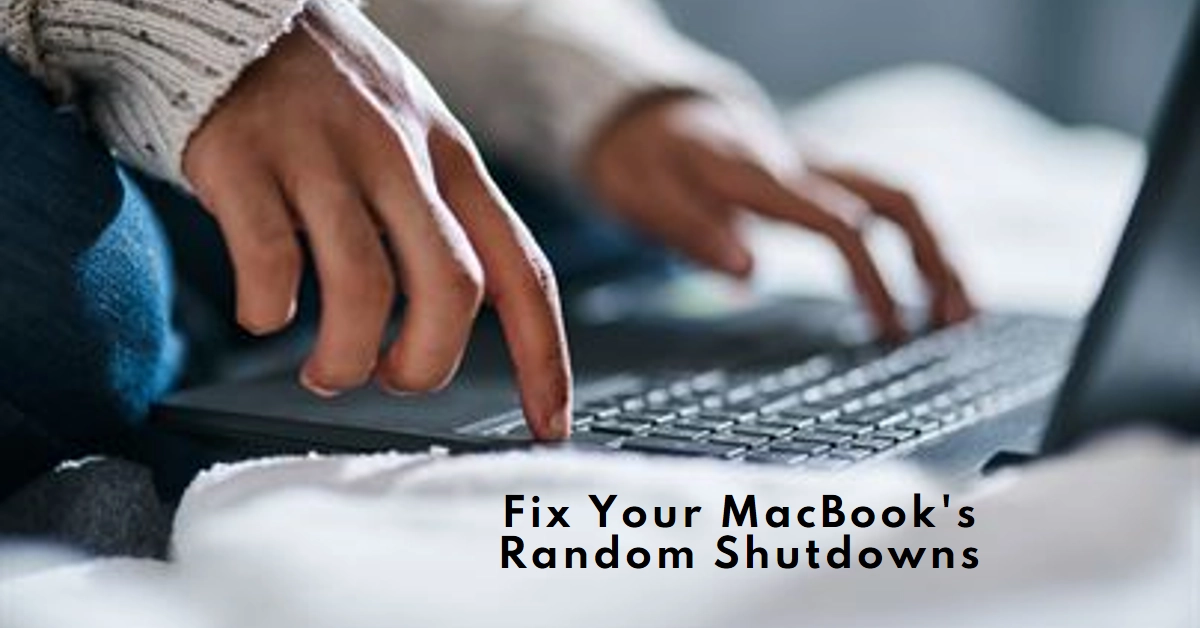A silent crash, a blank screen, then a sudden reboot – it’s the nightmare scenario for any MacBook user. Random shutdowns and unexpected restarts are not only frustrating, but they can also disrupt your workflow and jeopardize your data.
But before you throw your MacBook out the window, take a deep breath! This comprehensive guide will walk you through troubleshooting steps to diagnose and fix your MacBook’s erratic behavior, getting you back to smooth sailing in no time.
Before diving in, remember:
- Backup your data: It’s always better to be safe than sorry. Before trying any fixes, ensure your important files are backed up to an external drive or cloud storage.
- Note the circumstances: Pay attention to what you’re doing when the shutdowns occur. Are you running specific applications? Is it at high temperatures? Observing these patterns can point you towards the source of the problem.
Let’s dive into the potential causes and solutions for your MacBook’s random shutdowns and restarts.
Identifying the Cause
Random MacBook shutdowns can stem from various sources, making pinpointing the exact cause crucial for effective troubleshooting. Here are some key areas to consider:
1. Software Issues
- Outdated macOS or incompatible apps: Outdated software can introduce bugs and glitches, while incompatible apps may clash with your system, leading to crashes and reboots.
- Malware or malicious software: Malware can wreak havoc on your system, causing instability and unexpected shutdowns.
- Overheating: Demanding tasks or dusty internal components can cause your Mac to overheat, triggering automatic shutdowns as a safety measure.
2. Hardware Issues
- Faulty battery: A failing battery may not provide enough power, causing shutdowns, especially when unplugged.
- Failing RAM or hard drive: Faulty memory or storage issues can corrupt data and lead to system instability.
- Sensor malfunctions: Temperature sensors or other internal sensors malfunctioning can misinterpret system conditions and trigger unnecessary shutdowns.
Troubleshooting Strategies
Once you have a general idea of the potential cause, it’s time to roll up your sleeves and get to work. Here’s a breakdown of troubleshooting strategies based on the suspected culprit:
1. Software Issues
- Update your macOS: Check for and install any available macOS updates. This ensures you have the latest bug fixes and security patches.
- Update your apps: Update all your apps, especially those you use regularly. Incompatible versions can cause conflicts.
- Third-party app conflicts: Certain applications can clash with macOS or other programs, causing crashes and restarts. Identify any programs you recently installed or updated around the time the shutdowns began. To isolate the issue, boot into Safe Mode (hold Shift key on startup) and see if the problem persists. If not, gradually reintroduce applications until you find the culprit. Consider contacting the app developer for updates or compatibility solutions.
- Corrupted files: System files or application files can become corrupted, leading to instability. Run Disk Utility by going to “Applications” > “Utilities” > “Disk Utility”. Select your startup disk and click “Verify Disk”. If errors are found, click “Repair Disk”. You can also try reinstalling the problematic application(s).
- Run a malware scan: Use a reputable antivirus or anti-malware software to scan your system for any malicious software.
- Check for overheating: If your MacBook feels hot, ensure proper ventilation and avoid running demanding tasks in hot environments. Consider cleaning internal components to remove dust buildup.
- Safe Boot and diagnose apps: Restart your Mac in Safe Mode (Shift key during startup) to isolate the issue to third-party apps. If the shutdowns stop in Safe Mode, it indicates a software conflict. Uninstall recently installed apps or use tools like Activity Monitor to identify resource-hogging apps.
2. Hardware Issues
- Check your battery health: Use the “About This Mac” menu and click “System Report.” Under “Power,” check the “Battery Health” section. If the condition is “Replace Soon” or “Replace Now,” consider a battery replacement.
- Overheating: Excessive heat can trigger automatic shutdowns to protect your MacBook. Check if the fans are functioning properly and clean any dust buildup inside the vents. Avoid using your MacBook on soft surfaces like beds or pillows that can block airflow. Consider using a cooling pad for heavy workloads.
- Run Apple Diagnostics: Hold Option and D during startup to run Apple Diagnostics, which can detect hardware issues.
- Reset your SMC and PRAM: These system management settings can sometimes become corrupted. Resetting them can resolve unexpected shutdowns. (Instructions for resetting SMC and PRAM are readily available online depending on your specific MacBook model.)
Advanced Troubleshooting
If the above steps haven’t solved your problem, consider more advanced options:
- Reinstall macOS: This should be a last resort, as it erases all your data. Back up your files and reinstall macOS from scratch using Recovery Mode.
- Visit an Apple Authorized Service Provider: If none of the troubleshooting steps work, it’s best to consult a professional. Apple technicians can diagnose and repair hardware issues or perform more advanced software troubleshooting.
Pro Tip: If you’re unsure about the cause of the shutdowns, consult Apple’s Diagnostic tool within AppleCare. It can identify and diagnose many hardware and software issues.
When to Seek Professional Help
- If you’ve tried all the troubleshooting steps above and the shutdowns persist.
- If you suspect hardware damage, or are uncomfortable opening your MacBook for cleaning.
- If your MacBook is under warranty and eligible for Apple’s repair services.
Final Notes
Random Mac shutdowns can be frustrating, but remember, there’s usually a solution. By systematically identifying the cause and applying the appropriate troubleshooting steps, you can get your MacBook back to its stable and reliable self.
Don’t hesitate to seek professional help if needed. With a bit of patience and perseverance, you’ll be back to enjoying the smooth performance you expect from your Mac.
